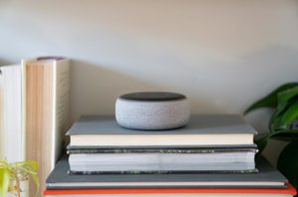In this guide we’ll go over everything you need to know, from setting up your internet to choosing the perfect devices. So let’s get into it! Everyone has different needs, but generally we recommend at least 200 Mbps for most connected households and up to 1 GB internet speeds for those who have a bunch of roommates (or are splitting internet with adjacent units). Not sure how fast your current internet is? Test it out using our internet speed test. Another thing to invest in (if you haven’t already) is a powerful modem and router. Most of your smart devices will connect to the internet through Wi-Fi. A dinky old router will easily get overloaded by that bandwidth. One advantage that Google Assistant has over other smart home ecosystems is that it’s automatically built-in to many Android phones as the default assistant (much like Siri is built into iPhones). You might already be using Assistant in your daily life. Perhaps Google Assistant’s biggest asset is . . . Google. Who else would you want to answer your questions, give you directions, make shopping suggestions, and otherwise navigate your complicated, modern day life? Apple’s HomeKit has the smooth design and powerful functionality that we’ve all come to expect from Apple devices. However, there are fewer products out there that have the system built-in. Those that do have it built-in are often pricey. Hubs can be as cheap and simple as a smart speaker that lets you control devices with voice command. But some hubs can get really fancy (and pricey). Many of the best smart hubs can even connect products that are in different ecosystems and make it easier to connect devices that are far apart physically. But some people may choose to skip the hub altogether. Most smart devices can be controlled using a smartphone or computer app. It might not be as simple (or feel as futuristic) but it gets the job done. With smart plugs, you can turn your household objects off and on with a voice command or a few clicks on your phone. You can help control the temperature in your house while you’re away by turning on fans and air conditioners. You can set your air purifier to go on and off at certain times. For less than $100, you can outfit every room in your apartment with high-quality smart plugs. It’s the quickest, cheapest, and easiest way to make your apartment seem futuristic. Smart light bulbs are usually cheap, and they’re easy to bring with you to a new apartment or home. There are some out there that can change color, sync with the music on your smart speaker, or even play music out of their own speakers! Smart home security systems come in all shapes and sizes. Some of the best systems, like those from Vivint, can secure your home in several different ways: with censors, cameras, live monitoring, and doorbell systems. For many people, just buying a couple of smart cameras might do the trick fine. They are easy to set up and are quite portable, so you don’t have to do any tricky wiring work within the walls. Most smart doorbells allow you to see a live feed of your front door, but also store videos for later review. Renters may be wary of changing the locks on a place they don’t own, but many smart locks are actually very easy to install and uninstall. Products like the August Smart Lock can fit right over your existing deadbolt. You can also get a smart carbon monoxide detector for added protection.
